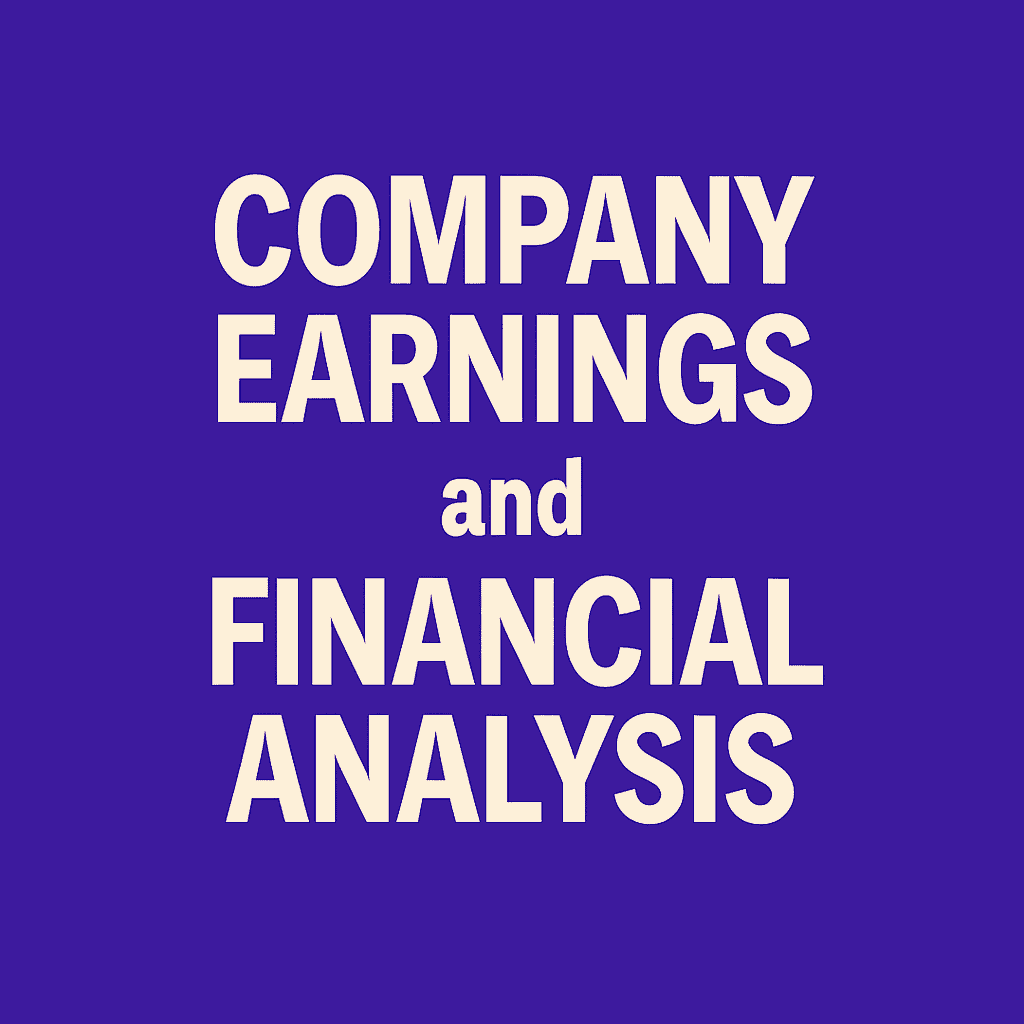Meta Platforms, Inc. (NASDAQ: META)
Q2 2025 Financial Analysis | July 30, 2025
Executive Summary
Meta delivered exceptional Q2 2025 results, with revenue surging 22% year-over-year to $47.52 billion, driven by strong advertising performance and continued user growth. The company achieved net income of $18.34 billion, up 36% from the prior year, while diluted earnings per share reached $7.14, representing a 38% increase. Family daily active people (DAP) reached 3.48 billion, growing 6% year-over-year, with advertising impressions increasing 11% and average price per ad rising 9%. Operating margin expanded significantly to 43% compared to 38% in Q2 2024, demonstrating strong operational leverage as the company benefits from its efficiency initiatives.
Q2 2025 Highlights
Financial Performance
Meta’s Q2 2025 financial performance exceeded expectations across key metrics, with total revenue growing 22% year-over-year to $47.52 billion. This robust growth was driven primarily by strong advertising revenue, which reached $46.56 billion, up 21% from the prior year. The revenue growth was consistent on both reported and constant currency basis, indicating broad-based strength across geographic regions.
Net income demonstrated exceptional performance, increasing 36% to $18.34 billion, significantly outpacing revenue growth and highlighting the company’s improved operational efficiency. This translated to diluted earnings per share of $7.14, a 38% increase from $5.16 in Q2 2024, benefiting both from higher profits and ongoing share repurchase activities.
Operating income surged 38% to $20.44 billion, with operating margin expanding 500 basis points to 43%. This margin expansion reflects the company’s successful “Year of Efficiency” initiatives, disciplined cost management, and the scalable nature of its advertising platform. Total costs and expenses increased only 12% compared to the 22% revenue growth, demonstrating strong operational leverage.
While free cash flow decreased to $8.55 billion from $10.90 billion in Q2 2024, this decline was primarily due to significantly higher capital expenditures of $17.01 billion related to AI infrastructure investments. The company generated $25.56 billion in operating cash flow, demonstrating strong underlying cash generation capabilities.
The effective tax rate remained stable at 11%, consistent with the prior year period. The company’s strong balance sheet was further reinforced with cash, cash equivalents, and marketable securities totaling $47.07 billion as of June 30, 2025.
User Engagement & Growth Metrics
| Platform | Family DAP (Q2 2025) | YoY Growth | Key Trends |
|---|---|---|---|
| Family of Apps | 3.48B | +6% | Consistent growth across all major platforms |
| ~2.1B (est.) | +3% (est.) | Stable engagement in mature markets | |
| ~1.4B (est.) | +8% (est.) | Strong Reels adoption driving engagement | |
| ~2.8B (est.) | +5% (est.) | Growing business messaging usage |
Meta’s user engagement metrics remained robust in Q2 2025, with Family daily active people (DAP) reaching 3.48 billion, representing a 6% year-over-year increase. This growth demonstrates the continued global appeal and utility of Meta’s platform ecosystem, despite the company’s scale and maturity in many markets.
The 6% DAP growth rate, while moderating from previous quarters, reflects the natural deceleration expected as the user base approaches global smartphone penetration limits in many regions. However, the company continues to see healthy growth in emerging markets and sustained engagement levels in mature markets.
Ad impressions increased 11% year-over-year, outpacing user growth and indicating improved content consumption and engagement per user. This suggests that Meta’s algorithm improvements and content recommendation systems are successfully driving deeper engagement with the platform.
The average price per ad increased 9% year-over-year, reflecting the continued effectiveness of Meta’s advertising platform and strong advertiser demand. This pricing power demonstrates the value advertisers place on Meta’s targeting capabilities and the high conversion rates they achieve on the platform.
Reels continues to be a significant driver of engagement growth, particularly on Instagram and Facebook. The short-form video format has successfully competed with TikTok and other platforms, helping Meta retain younger users and increase time spent on the platform. The integration of Reels across the Family of Apps has created a cohesive short-form video ecosystem.
WhatsApp’s business messaging capabilities continue to expand, with growing adoption among enterprises for customer service and marketing communications. This represents a significant monetization opportunity beyond traditional advertising revenue streams.
Segment Performance
| Segment | Revenue (Q2 2025) | YoY Change | Operating Income/Loss | Operating Margin |
|---|---|---|---|---|
| Family of Apps | $47.15B | +22% | $24.97B | 53% |
| Reality Labs | $370M | +5% | -$4.53B | -1,224% |
Family of Apps (FoA) delivered exceptional performance with revenue of $47.15 billion, up 22% year-over-year. This segment includes Facebook, Instagram, Messenger, WhatsApp, and other services, generating the vast majority of Meta’s revenue through advertising.
FoA operating income reached $24.97 billion with an operating margin of 53%, compared to $19.34 billion and 50% margin in Q2 2024. This margin expansion demonstrates the scalability of the advertising platform and the success of efficiency initiatives implemented over the past year.
Advertising revenue within FoA grew 21% to $46.56 billion, driven by both higher ad impressions (11% growth) and increased average pricing (9% growth). This balanced growth indicates healthy demand dynamics and effective monetization of the growing user base.
Reality Labs (RL) generated revenue of $370 million, up 5% year-over-year, showing modest growth in Meta’s metaverse and VR/AR initiatives. However, the segment continued to face significant losses, with an operating loss of $4.53 billion, slightly higher than the $4.49 billion loss in Q2 2024.
The Reality Labs losses reflect Meta’s continued substantial investment in metaverse technologies, VR/AR hardware development, and related research and development activities. These investments represent CEO Mark Zuckerberg’s long-term vision for the future of social interaction and computing platforms.
Despite the losses, Reality Labs showed some positive momentum with revenue growth and continued product development, including improvements to the Meta Quest headset lineup and progress on AR glasses technology. The segment remains a strategic priority despite near-term profitability challenges.
AI Investments & Infrastructure Scaling
Meta significantly accelerated its artificial intelligence investments in Q2 2025, positioning the company as a leader in the AI revolution sweeping the technology industry:
Capital Expenditure and Infrastructure
- Record Capital Expenditures: $17.01 billion in Q2 2025, more than double the $8.17 billion in Q2 2024, primarily driven by AI infrastructure investments
- Data Center Expansion: Massive buildout of AI-capable data centers to support training and inference of large language models
- GPU Infrastructure: Significant investments in NVIDIA H100 and other advanced GPUs for AI workloads
- Full-Year Guidance: 2025 capital expenditures expected in the range of $66-72 billion, narrowed from prior outlook
AI Product Integration
Meta is rapidly integrating AI capabilities across its platform ecosystem:
- AI-Powered Recommendations: Enhanced content discovery and ad targeting through advanced machine learning algorithms
- Meta AI Assistant: Rollout of conversational AI capabilities across Facebook, Instagram, and WhatsApp
- Creative Tools: AI-powered content creation tools for users and advertisers
- Business Applications: AI-driven customer service and automation tools for WhatsApp Business
CEO Mark Zuckerberg emphasized the company’s commitment to AI leadership, stating his excitement to “build personal superintelligence for everyone in the world.” This vision encompasses both consumer-facing AI products and enterprise applications that could significantly expand Meta’s addressable market.
The substantial AI investments, while pressuring near-term margins and cash flow, are expected to drive long-term competitive advantages in user engagement, advertiser performance, and new revenue opportunities. Meta’s scale and data advantages position it well to benefit from the AI transformation across the technology landscape.
Financial Outlook & Guidance
Meta provided the following guidance for Q3 2025 and full-year 2025:
Q3 2025 Outlook
- Total revenue expected in the range of $47.5-50.5 billion, representing continued strong growth momentum
- Foreign currency expected to be approximately 1% tailwind to year-over-year total revenue growth
- Q4 2025 year-over-year growth rate expected to be slower than Q3 as the company laps stronger growth comparisons
Full-Year 2025 Expectations
- Total Expenses: Expected in the range of $114-118 billion, narrowed from prior outlook of $113-118 billion
- Expense Growth: Reflecting 20-24% year-over-year growth rate
- Capital Expenditures: Expected in the range of $66-72 billion, up approximately $30 billion year-over-year at the mid-point
2026 Outlook Considerations
Management highlighted several factors that will drive expense growth in 2026:
- Infrastructure Costs: Sharp acceleration in depreciation expense growth and higher operating costs as AI infrastructure scales
- Employee Compensation: Addition of technical talent in priority areas and full-year impact of 2025 hiring
- Continued AI Investment: Another year of significant capital expenditure growth expected in 2026
The company expects these factors will result in a 2026 year-over-year expense growth rate above the 2025 expense growth rate, indicating continued substantial investment in AI capabilities and infrastructure scaling.
Regulatory Environment & Business Challenges
Meta continues to navigate an increasingly complex regulatory landscape, particularly in Europe, with potential significant impacts on business operations:
European Regulatory Challenges
- Digital Markets Act (DMA): Ongoing engagement with the European Commission regarding compliance requirements
- Less Personalized Ads (LPA): Introduced in November 2024 based on EC feedback, but may require further modifications
- Revenue Risk: Potential significant negative impact on European revenue as early as Q3 2025 if required to modify advertising model
- Appeal Process: Company has appealed EC’s DMA decision, but modifications may be imposed during appeal
Tax Environment Changes
- U.S. Tax Law Changes: New U.S. tax law expected to reduce federal cash tax for remainder of 2025 and future years
- Implementation Options: Multiple alternative implementation methods under evaluation
- 2025 Tax Rate: Expected to be higher than Q2 rate, but magnitude remains uncertain
The regulatory environment remains a key risk factor for Meta, with potential material impacts on revenue, particularly in the European market. The company’s ability to navigate these challenges while maintaining user experience and advertiser effectiveness will be crucial for sustained growth.
Management emphasized their commitment to working constructively with regulators while protecting the core functionality that makes their platforms valuable to both users and advertisers. The outcome of ongoing regulatory discussions, particularly in Europe, could significantly impact 2025 and 2026 financial performance.
Capital Allocation & Shareholder Returns
Meta maintained its commitment to returning capital to shareholders while investing heavily in future growth opportunities:
Share Repurchase Program
- $9.76 billion in share repurchases during Q2 2025 of Class A common stock
- Continued reduction in outstanding share count, enhancing earnings per share growth
- Demonstrates confidence in long-term value creation potential
Dividend Payments
- $1.33 billion in dividend and dividend equivalent payments during the quarter
- Consistent dividend policy supporting shareholder income needs
- Balance between growth investment and shareholder returns
Investment Priorities
Meta’s capital allocation strategy focuses on three key areas:
- AI Infrastructure: Massive investments in computing power, data centers, and AI capabilities to maintain technological leadership
- Product Development: Continued R&D investment in core platforms, Reality Labs, and new product initiatives
- Shareholder Returns: Substantial share repurchases and dividend payments while maintaining financial flexibility
The company’s strong cash generation capabilities enable this balanced approach, with operating cash flow of $25.56 billion in Q2 2025 supporting both growth investments and shareholder returns. The robust balance sheet with $47.07 billion in cash and marketable securities provides significant financial flexibility for continued investment and capital return programs.
Risks & Opportunities
Opportunities
Risks
Conclusion
Strengths
- Exceptional financial performance with 22% revenue growth and 36% net income growth
- Strong user engagement with 3.48 billion Family DAP growing 6% year-over-year
- Expanding operating margins demonstrating operational leverage and efficiency gains
- Massive AI investments positioning for future technological leadership
- Robust cash generation supporting both growth investment and shareholder returns
Areas to Monitor
- European regulatory developments and potential revenue impact
- Free cash flow pressure from substantial capital expenditure increases
- Reality Labs losses and timeline for meaningful monetization
- User growth moderation as platform maturity increases
- Competitive dynamics in AI and social media landscape
Summary
Meta delivered outstanding Q2 2025 results that exceeded expectations across all key financial metrics. Revenue growth of 22% to $47.52 billion, combined with 36% net income growth and expanding operating margins to 43%, demonstrates the company’s exceptional execution and the continued strength of its advertising platform.
The company’s massive AI investments, while pressuring free cash flow in the near term, position Meta as a leader in the artificial intelligence revolution. These investments in infrastructure, combined with the company’s unparalleled user base and data advantages, create significant competitive moats for future growth.
While regulatory challenges, particularly in Europe, present near-term risks, Meta’s diversified global platform and strong financial position provide resilience. The company’s ability to maintain robust user growth, improve monetization, and invest heavily in future technologies while returning substantial capital to shareholders reflects exceptional operational and strategic execution.
Looking ahead, Meta is well-positioned to benefit from AI-driven improvements in user engagement and advertising effectiveness, while its long-term investments in Reality Labs may unlock new computing paradigms. The combination of strong current performance and strategic positioning for future growth makes Meta a compelling investment despite near-term investment pressures and regulatory uncertainties.
Source: Meta Q2 2025 Earnings Release


